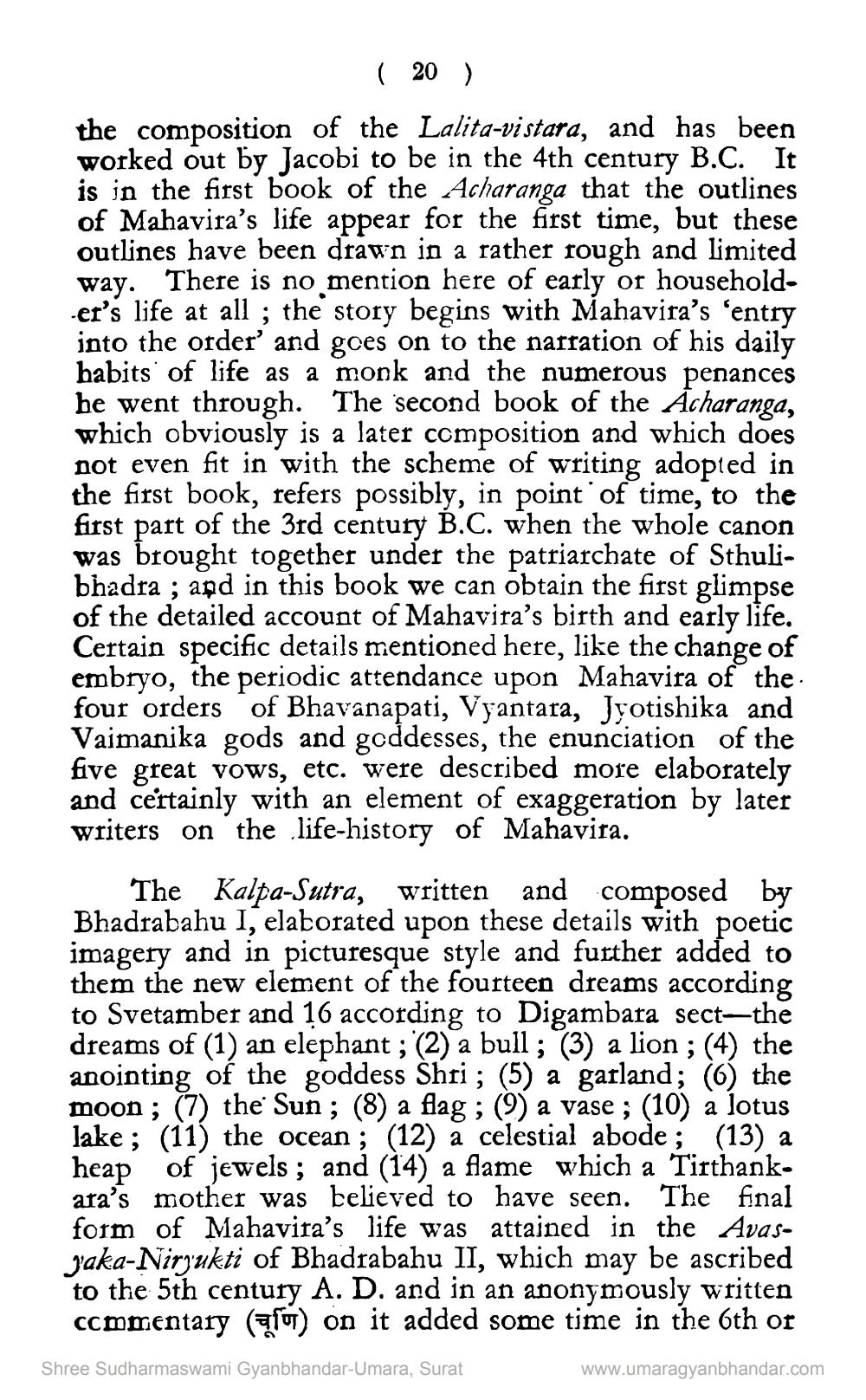________________
( 20
)
the composition of the Lalita-vistara, and has been worked out by Jacobi to be in the 4th century B.C. It is in the first book of the Acharanga that the outlines of Mahavira's life appear for the first time, but these outlines have been drawn in a rather rough and limited way. There is no mention here of early or household. er's life at all ; the story begins with Mahavira's 'entry into the order and goes on to the narration of his daily habits of life as a monk and the numerous penances he went through. The second book of the Acharanga, which obviously is a later composition and which does not even fit in with the scheme of writing adopted in the first book, refers possibly, in point of time, to the first part of the 3rd century B.C. when the whole canon was brought together under the patriarchate of Sthulibhadra ; and in this book we can obtain the first glimpse of the detailed account of Mahavira's birth and early life. Certain specific details mentioned here, like the change of embryo, the periodic attendance upon Mahavira of the four orders of Bhavanapati, Vyantara, Jyotishika and Vaimanika gods and goddesses, the enunciation of the five great vows, etc. were described more elaborately and certainly with an element of exaggeration by later writers on the life-history of Mahavira.
The Kalpa-Sutra, written and composed by Bhadrabahu I, elaborated upon these details with poetic imagery and in picturesque style and further added to them the new element of the fourteen dreams according to Svetamber and 16 according to Digambara sect-the dreams of (1) an elephant ; (2) a bull; (3) a lion ; (4) the anointing of the goddess Shri; (5) a garland; (6) the moon ; (7) the Sun ; (8) a flag ; (9) a vase ; (10) a lotus lake ; (11) the ocean; (12) a celestial abode ; (13) a heap of jewels; and (14) a flame which a Tirthank. ara's mother was believed to have seen. The final form of Mahavira's life was attained in the Avasyaka-Nirgukti of Bhadrabahu II, which may be ascribed to the 5th century A. D. and in an anonymously written
commentary (qu) on it added some time in the 6th or Shree Sudharmaswami Gyanbhandar-Umara, Surat
www.umaragyanbhandar.com




